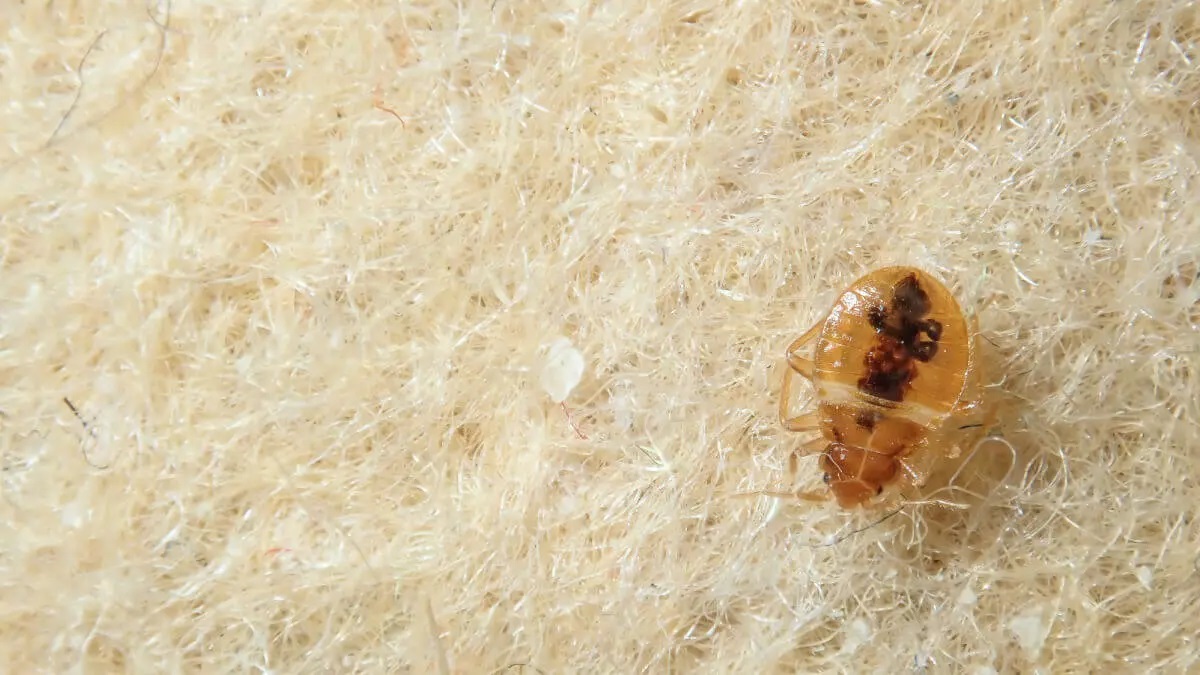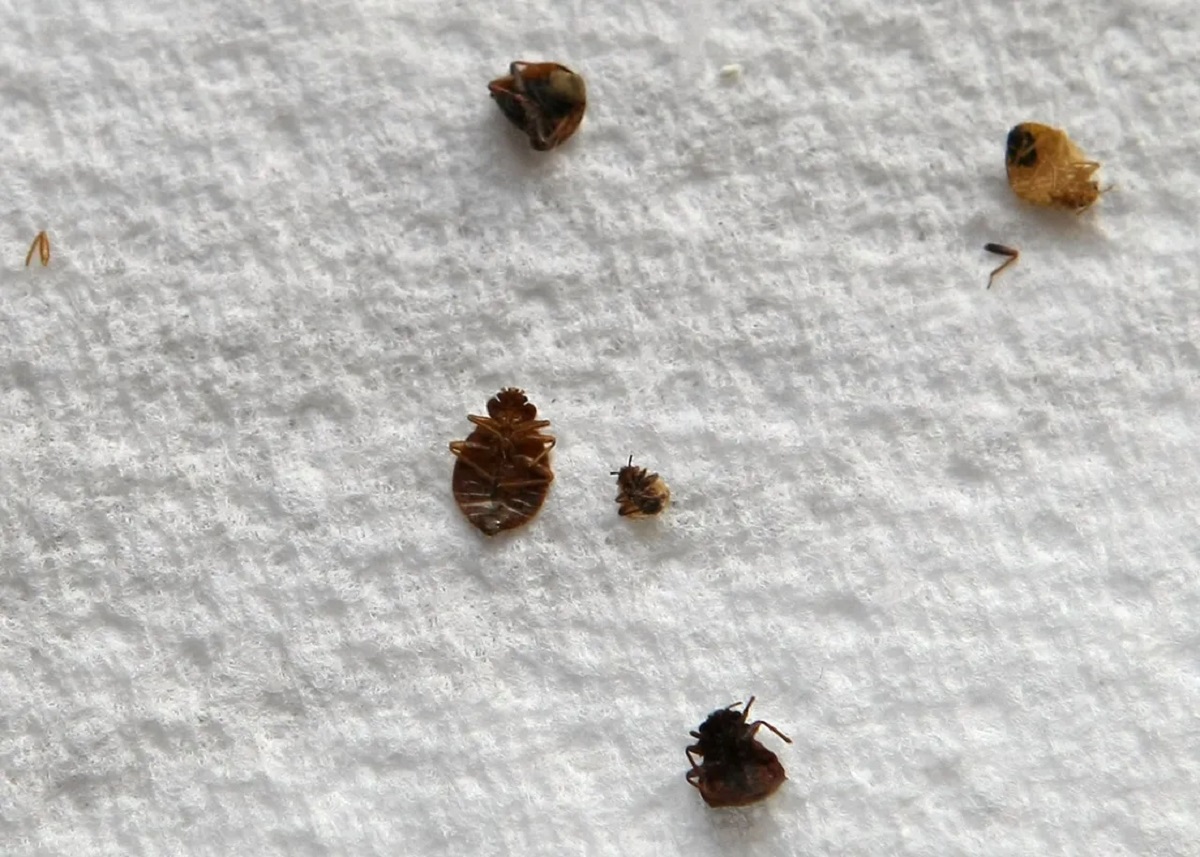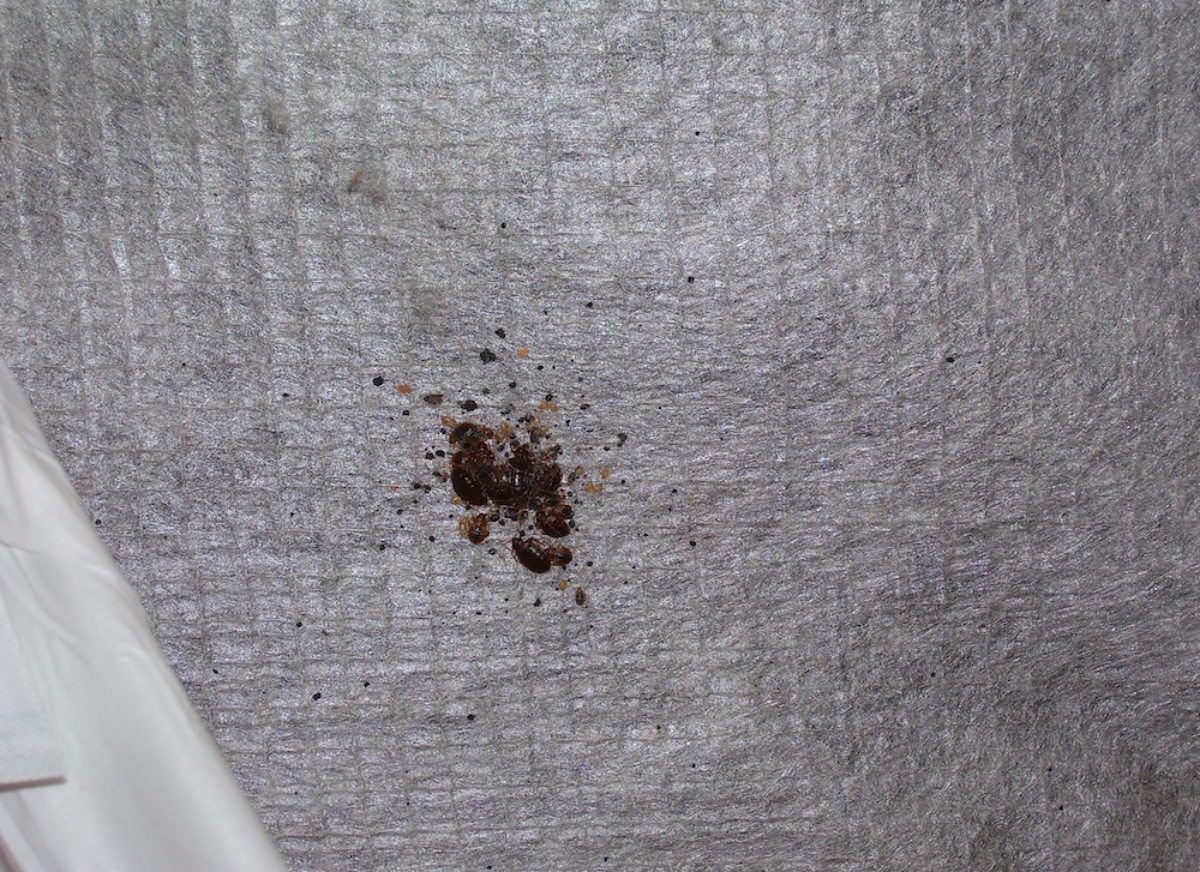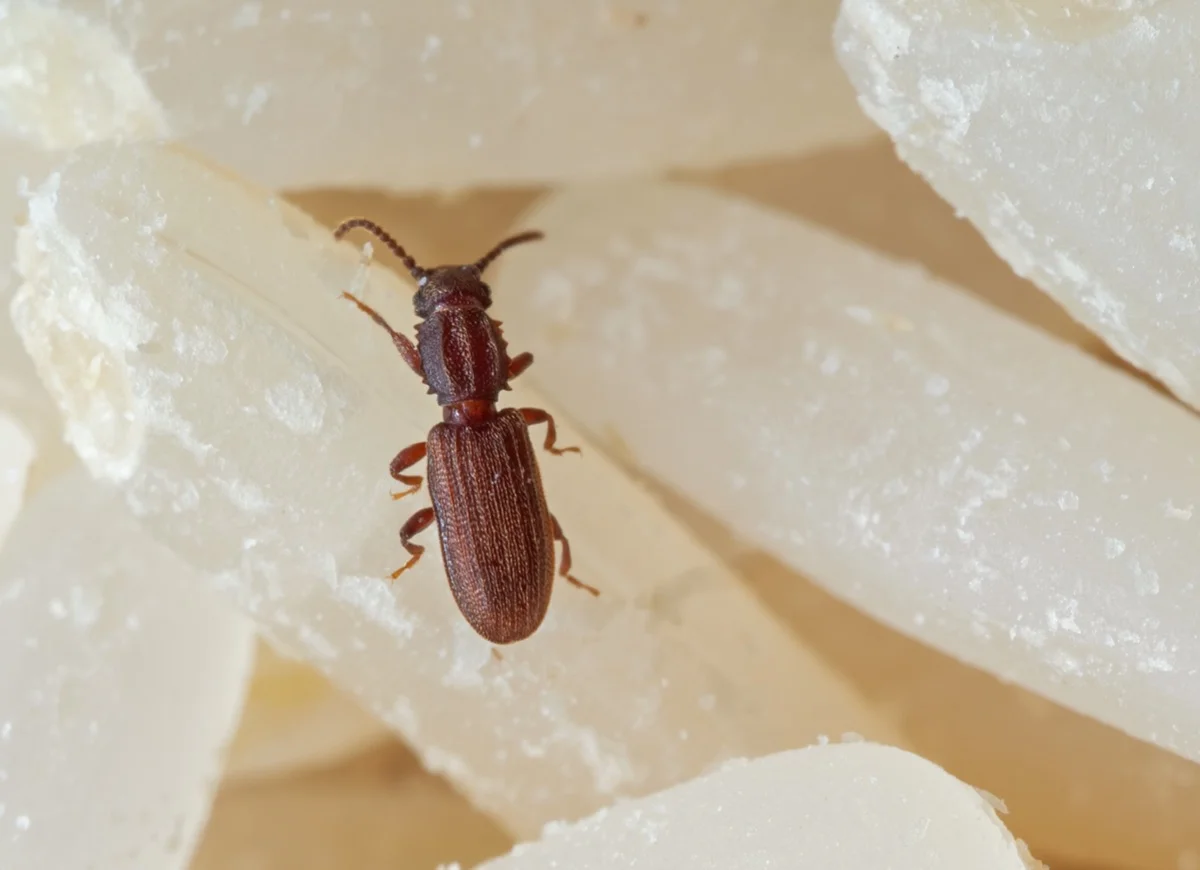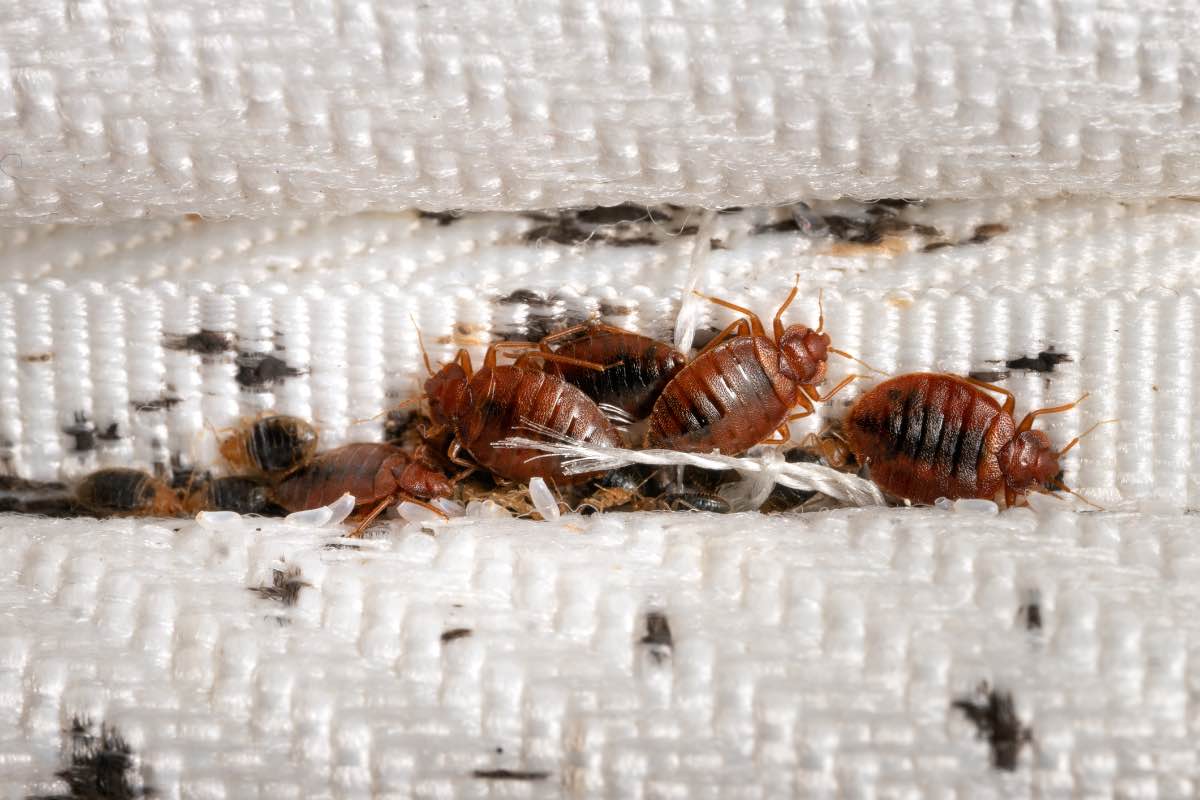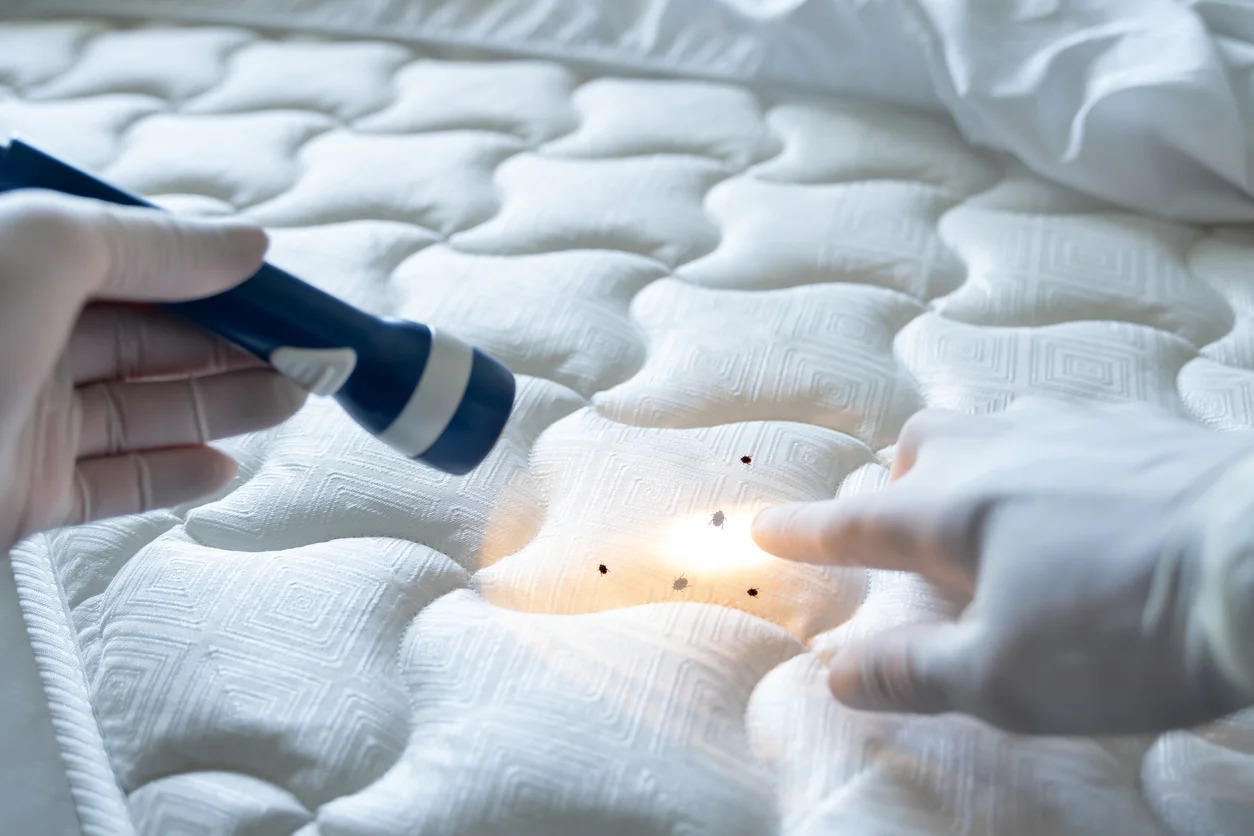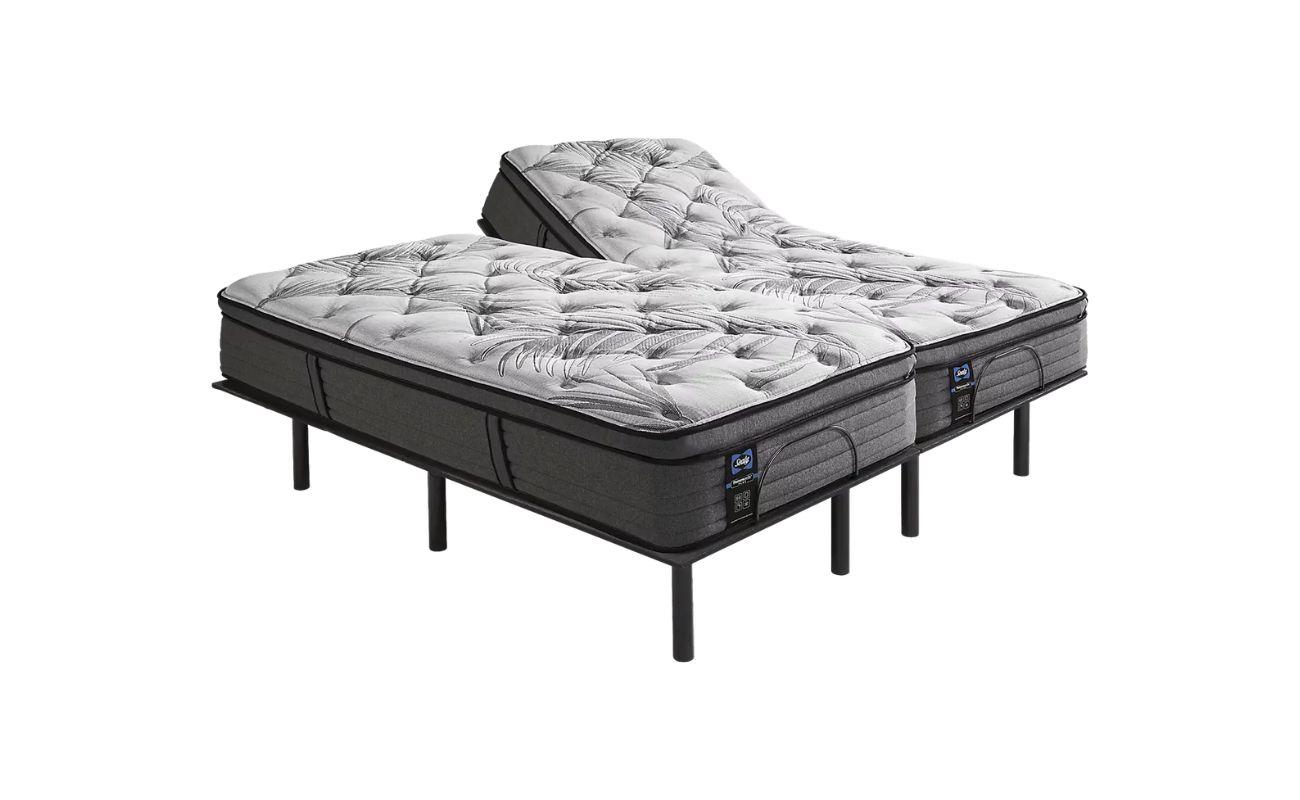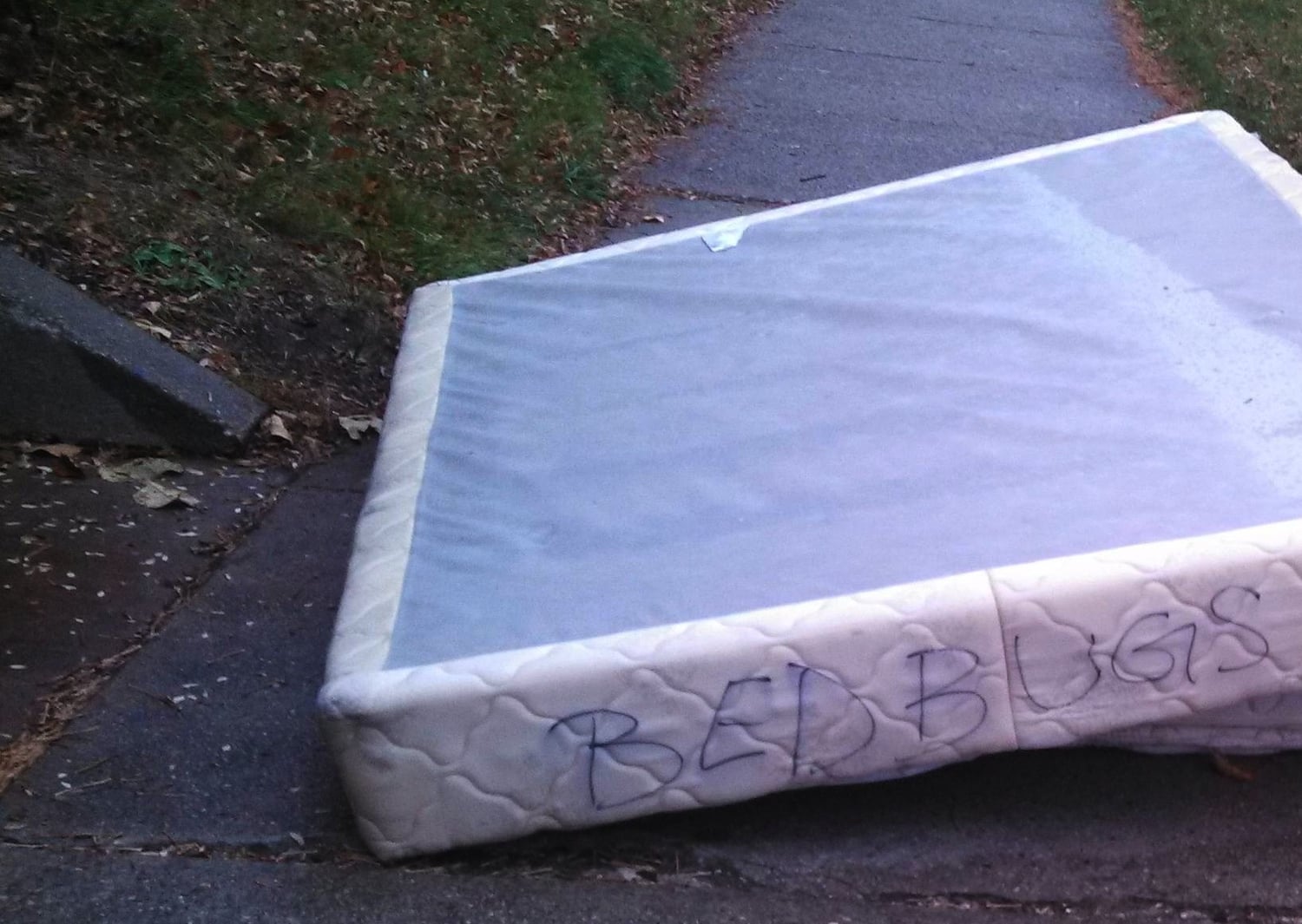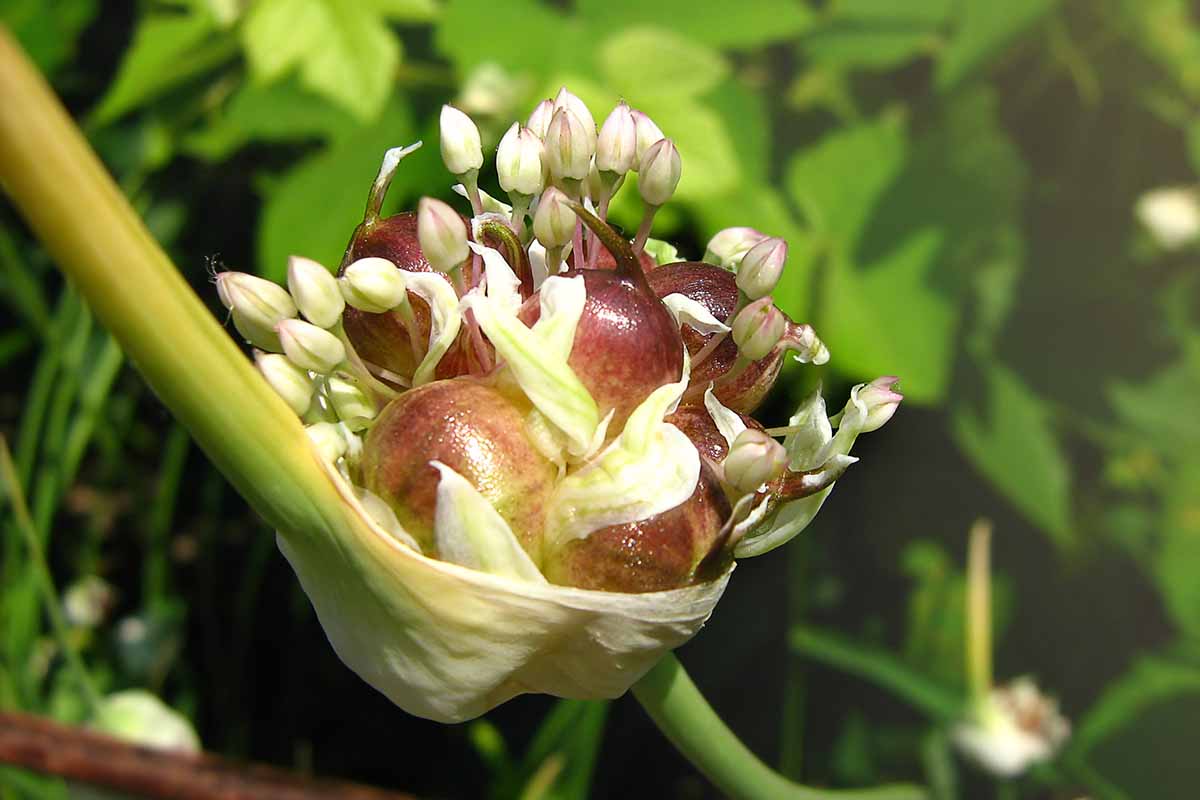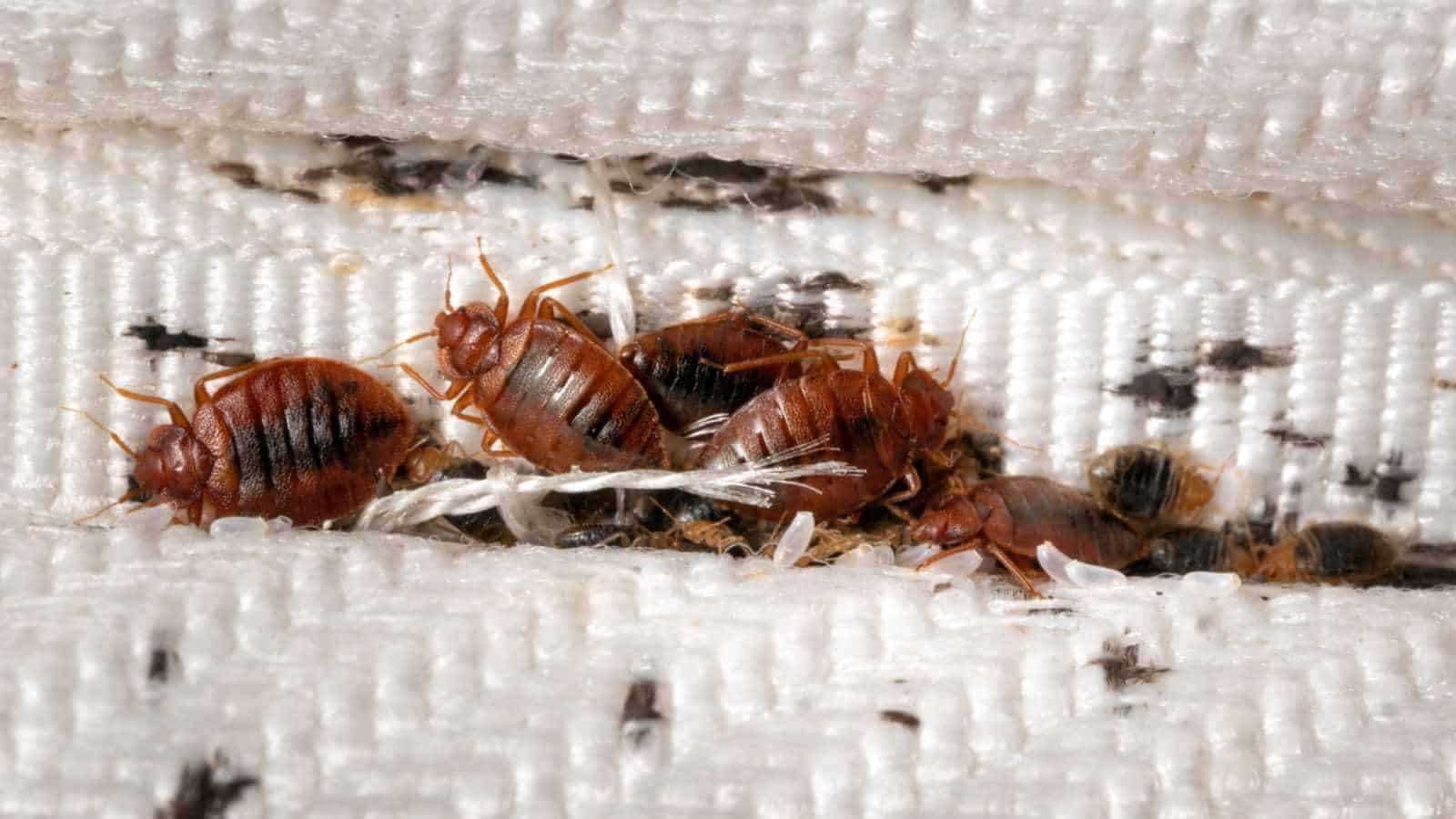Home>Furniture>Bedroom Furniture>What Do Bed Bugs Look Like In A Mattress
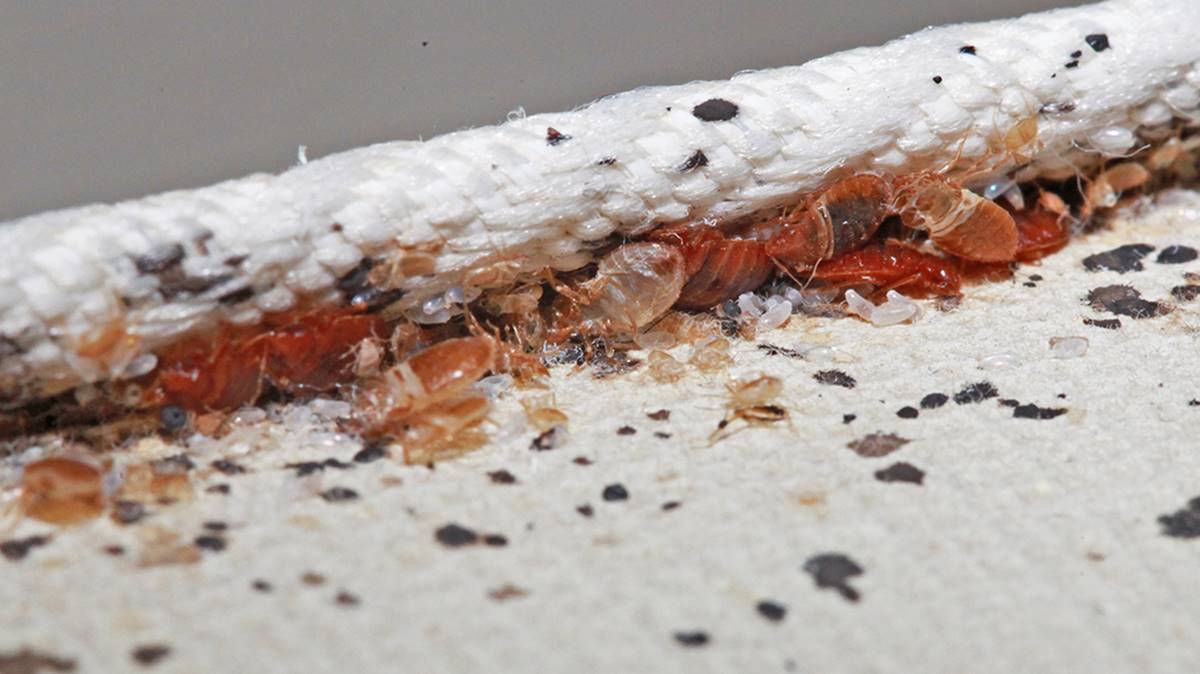

Bedroom Furniture
What Do Bed Bugs Look Like In A Mattress
Modified: March 25, 2024
Discover what bed bugs look like in a mattress and how to identify them. Get expert tips for dealing with these pests in your bedroom furniture.
(Many of the links in this article redirect to a specific reviewed product. Your purchase of these products through affiliate links helps to generate commission for Storables.com, at no extra cost. Learn more)
Introduction
Welcome to the world of bed bugs! These tiny, elusive creatures have become a notorious nuisance in households around the globe. If you’re concerned about the presence of bed bugs in your mattress, it’s important to know what they look like so you can identify and address the issue proactively.
Bed bugs are small insects that belong to the family Cimicidae. They feed exclusively on blood, usually of humans, and are most active during the night when their unsuspecting hosts are fast asleep. These pests are excellent hiders, making it challenging to spot them during the day.
In this article, we will delve into the physical characteristics of bed bugs and help you identify them in a mattress. Armed with this knowledge, you can take the necessary steps to eliminate these unwelcome visitors from your bedroom.
Please note: This article primarily focuses on the appearance and identification of bed bugs in a mattress. If you suspect a bed bug infestation in other areas of your home, it’s crucial to consult with a professional pest control expert for treatment.
Now, let’s dive into the world of bed bugs and discover what they look like!
Key Takeaways:
- Detecting bed bugs in your mattress involves identifying signs like fecal stains, cast skins, and eggs. Professional help is crucial for effective treatment and elimination of these pests.
- Understanding the physical characteristics of bed bugs, such as their size, color, and body structure, is essential for accurate identification and proactive elimination. Professional pest control experts can provide effective treatment strategies.
Read more: What Do Bed Bugs On A Mattress Look Like
Identification of Bed Bugs
Before we explore the physical characteristics of bed bugs, it’s crucial to understand how to identify these pests. Proper identification is key to diagnosing a potential bed bug problem in your mattress.
One common misconception is that bed bugs are too small to see with the naked eye. While they are indeed tiny, measuring about the size of an apple seed, they are visible to the human eye under close scrutiny.
Here are a few key signs to look out for when trying to identify bed bugs:
- Bite marks: If you wake up with itchy, red, and inflamed bite marks on your body, especially in a pattern of multiple bites in a row or a cluster, there’s a high chance that bed bugs are the culprits.
- Presence of bed bug excrement: Bed bugs leave behind dark brown or black spots on your sheets, mattress, or nearby furniture. These stains are actually digested blood and are often found near their hiding places.
- Shed exoskeletons: As bed bugs grow and develop, they molt their exoskeletons. These discarded skins can be found in areas where they hide, such as seams of the mattress, crevices in the bed frame, or even behind the headboard.
- Sweet, musty odor: Bed bugs release a distinctive, sickly-sweet odor that can be quite strong in infested areas. If you notice an unusual odor in your bedroom, it could be a sign of a bed bug infestation.
It’s important to note that although bed bug bites and the presence of their excrement and shed skins can be strong indicators of an infestation, they are not definitive proof on their own. To confirm the presence of bed bugs, a visual inspection of the bugs themselves is necessary.
Now that we have a general understanding of how to identify potential bed bug infestations, let’s take a closer look at the physical characteristics of these pests to ensure accurate identification.
Physical Characteristics of Bed Bugs
Understanding the physical characteristics of bed bugs is crucial for accurate identification. While they may be small, these pests have distinctive features that set them apart from other insects. Let’s explore the key physical characteristics of bed bugs:
- Size and Shape: Adult bed bugs are about the size of an apple seed, ranging between 4 to 5 millimeters in length. They have a flat, oval-shaped body that allows them to easily hide in narrow cracks and crevices.
- Color: Bed bugs have a reddish-brown to mahogany coloration, which can appear darker after they have fed on blood. Their color makes them blend in well with mattresses, furniture, and other dark hiding spots.
- Body Structure: The bodies of bed bugs are divided into three main parts: the head, thorax, and abdomen. They have six legs that are well-suited for crawling and grasping surfaces.
Now that we have a basic understanding of the general physical characteristics of bed bugs, let’s delve into their life stages and growth.
Size and Shape
When it comes to bed bugs, their size and shape play a crucial role in their ability to hide and survive in various environments. Understanding these characteristics will aid in accurate identification.
Adult bed bugs typically measure around 4 to 5 millimeters in length, which is roughly the size of an apple seed. Despite their small size, they are visible to the naked eye, allowing for visual detection.
The shape of bed bugs is another distinguishing feature. They possess a flat, oval-shaped body, allowing them to effortlessly maneuver into tight spaces. This shape allows bed bugs to squeeze into cracks, crevices, and the seams of mattresses, making them excellent hiders.
One reason for their flattened bodies is their preference for harboring in narrow hiding spots near their hosts. This adaptation provides them with the advantage of remaining concealed during the day while their human hosts are likely to be in the room.
It is important to note that the size and shape of bed bugs can vary slightly depending on factors such as age and feeding status. After feeding on blood, their abdomens can become engorged, elongating their bodies and altering their appearance slightly.
Now that we have covered the size and shape of bed bugs, let’s move on to discussing the coloration of these pests.
Color
The coloration of bed bugs is an important characteristic to consider when identifying these pesky insects. Understanding their color can assist in distinguishing them from other common household pests.
Bed bugs typically have a reddish-brown to mahogany color. However, their color can vary depending on several factors, such as their age and whether or not they have recently fed on blood.
When bed bugs have recently fed on a blood meal, their bodies can appear darker and more reddish in color. This is due to the digestion process and the presence of blood within their bodies. As time passes, their color may gradually fade, becoming more brownish in hue.
One reason for their reddish-brown color is their exoskeleton, which acts as a protective outer shell. This exoskeleton is made up of a tough, chitinous material that provides support and protection for the bed bug’s body.
The reddish-brown color of bed bugs enables them to blend in effectively with the environment, particularly with materials commonly found in bedrooms, such as mattresses, upholstery, and wooden furniture. This color adaptation helps them remain hidden during the day when they tend to rest and avoid detection.
It’s important to note that the color of bed bugs is not a foolproof identification method on its own, as other insect pests may have similar coloring. However, when combined with other physical characteristics and signs of infestation, color can contribute to a more accurate identification.
Now that we’ve explored the coloration of bed bugs, let’s move on to discussing the body structure of these pests.
Read more: What Do Bed Bugs Look Like On A Mattress
Body Structure
The body structure of bed bugs plays a significant role in their biology and ability to thrive in various environments. Understanding their anatomy can aid in distinguishing them from other insects.
Bed bugs have a relatively simple body structure, consisting of three main parts: the head, thorax, and abdomen. This segmented body design enables them to move efficiently and adapt to different surfaces.
The head of a bed bug is small and rounded, housing its mouthparts. These mouthparts are designed for piercing the skin of their human hosts and extracting blood during feeding. Bed bugs use specialized feeding structures, including their elongated proboscis, to access blood vessels beneath the skin.
Attached to the head are the bed bug’s prominent compound eyes, which are typically dark in color. These eyes help bed bugs detect changes in light and movement, assisting them in their quest for finding a suitable host.
Located behind the head is the thorax, which links the head to the abdomen. The thorax is responsible for providing support and mobility to the insect. It is composed of three segments, each equipped with a pair of legs.
Bed bugs have six legs in total, giving them the ability to crawl and move swiftly across various surfaces. These legs are adapted for gripping and perching on different materials, allowing bed bugs to easily navigate their environment and find hiding spots.
Finally, we have the abdomen, the most distinct part of a bed bug’s body. This oval-shaped segment houses the digestive and reproductive organs of the insect. In females, the abdomen may appear larger and more rounded when they are engorged with blood after feeding.
The flat, oval shape of the abdomen allows bed bugs to fit into narrow crevices, seams, and cracks, making them excellent at hiding and surviving in various hidden spots, especially in mattresses and furniture.
Understanding the body structure of bed bugs can help differentiate them from other household pests and contribute to accurate identification. Now that we’ve explored their body structure, let’s delve into their life stages and growth.
Life Stages and Growth
Like many other insects, bed bugs go through multiple life stages as they grow and develop. Understanding these stages is essential in comprehending their life cycle and implementing effective control measures.
A bed bug’s life cycle consists of five main stages: egg, nymphs, and adulthood. Let’s take a closer look at each of these stages:
- Eggs: Female bed bugs lay tiny, white, and oval-shaped eggs. These eggs are about 1 millimeter in length and are typically laid in clusters or individually in various hiding spots, such as seams of mattresses or cracks in furniture. Bed bug eggs are barely visible to the naked eye and require close inspection to detect.
- Nymphs: Once the eggs hatch, nymphs emerge. Nymphs are miniature versions of adult bed bugs, but they lack fully developed wings and reproductive organs. They go through five nymphal stages, called instars, during which they molt and shed their exoskeletons. Nymphs range in size from 1.5 to 4.5 millimeters, depending on their instar. After each molt, the nymphs become progressively larger and closer in appearance to adult bed bugs.
- Adulthood: After completing the fifth nymphal stage, a bed bug reaches adulthood. At this stage, bed bugs are sexually mature and capable of reproducing. Adult bed bugs have a flattened oval body shape, ranging in size from 4 to 5 millimeters. They are reddish-brown in color, although their appearance can vary depending on their feeding status.
The time it takes for bed bugs to progress through each life stage can vary depending on factors such as temperature, availability of food (blood), and environmental conditions. Under optimal conditions, bed bugs can complete their life cycle in as little as a month.
Understanding the life cycle of bed bugs is crucial in developing effective control strategies. Since each life stage presents different vulnerabilities, targeting multiple stages simultaneously can help eliminate an infestation more efficiently.
Now that we’ve explored the life stages and growth of bed bugs, let’s move on to discussing the signs of bed bugs in a mattress.
Signs of Bed Bugs in a Mattress
When it comes to identifying bed bugs in your mattress, there are several telltale signs to look out for. These signs indicate the presence of bed bugs and can help you take timely action to address an infestation. Let’s explore the most common signs to watch for:
- Visual Inspection: Conduct a thorough visual inspection of your mattress, paying close attention to seams, crevices, and tufts. Look for any signs of the bugs themselves or their various life stages, such as eggs, nymphs, or adult bed bugs.
- Adult Bed Bugs: Adult bed bugs are visible to the naked eye and can be identified by their reddish-brown coloration and oval-shaped bodies. Look for these insects hiding in the corners, seams, and folds of your mattress.
- Nymphs or Juvenile Bed Bugs: Nymphs are smaller versions of adult bed bugs but lack fully developed wings and reproductive organs. They can appear translucent or light brown in color. Check for nymphs in the same areas where adult bugs are commonly found.
- Eggs: Bed bug eggs are tiny and white, about 1 millimeter in size. They are often laid in clusters or individually in hidden spots. While difficult to spot, careful inspection along seams and cracks may reveal the presence of these eggs.
- Fecal Stains: Bed bugs leave behind dark brown or black stains on your mattress. These stains are a result of their digested blood and may appear as small smears or dots. Focus on checking the seams, corners, and edges of your mattress for these telltale signs.
- Cast Skins: As bed bugs grow and molt, they shed their exoskeletons, leaving behind translucent, empty skins. These cast skins can accumulate in areas where bed bugs hide, such as the seams and edges of your mattress.
If you notice any signs of bed bugs in your mattress, it’s crucial to take immediate action to address the infestation. Bed bugs reproduce quickly and can spread to other areas of your home if left unattended.
Consulting with a professional pest control expert is recommended for effective treatment and elimination of bed bugs. They can provide guidance on the best course of action and implement appropriate strategies to eradicate the infestation.
Now that we’ve explored the signs of bed bugs in a mattress, let’s conclude our journey.
Inspect your mattress for small, reddish-brown bugs, tiny white eggs, or dark spots (fecal matter). Use a flashlight and magnifying glass for a thorough check.
Visual Inspection
Performing a visual inspection is an essential step in identifying bed bugs in your mattress. By carefully examining your mattress, you can detect signs of an infestation and take prompt action. Here’s how you can conduct a thorough visual inspection:
- Prepare the area: Start by clearing the area surrounding your mattress. Remove any sheets, blankets, or other bedding materials to get a clear view of the mattress itself.
- Use proper lighting: Adequate lighting is crucial for a thorough inspection. Use a bright flashlight or a lamp with a focused beam to illuminate different areas of the mattress.
- Check the seams and corners: Begin by inspecting the seams and corners of the mattress. Bed bugs are skilled at hiding in narrow crevices, so pay close attention to these areas. Look for any signs of adult bed bugs, nymphs, or eggs.
- Examine the tufts and labels: Bed bugs may also hide in the tufts of a mattress, as well as in the labels or tags attached to it. Carefully inspect these areas, lifting up any fabric or material to thoroughly examine for signs of bed bugs.
- Inspect the mattress edges: Move on to the edges of the mattress, checking along the sides and bottom. Bed bugs can hide in the folds and seams of the fabric, so carefully examine these areas as well.
- Look for stains and cast skins: Keep an eye out for dark brown or black stains, which are indicators of bed bug fecal matter. Also, look for translucent, empty skins, which are shed exoskeletons left behind by molting bed bugs.
- Extend the inspection to the bed frame: While focusing on the mattress, don’t forget to inspect the bed frame and its components. Bed bugs can hide in cracks, crevices, and joints of the frame, so examine these areas thoroughly.
During the visual inspection, it’s essential to be patient and methodical. Take your time to thoroughly examine every nook and cranny of the mattress and its surroundings. Remember, bed bugs are experts at hiding, so a close and careful inspection is crucial for accurate detection.
If you spot any signs of bed bugs during the visual inspection, it’s important to take immediate action. Consult with a professional pest control expert to develop an effective treatment plan and eliminate the infestation.
Now that we’ve discussed the visual inspection process, it’s time to conclude our discussion on identifying bed bugs in a mattress.
Read more: What Do Bed Bug Eggs Look Like On A Mattress
Adult Bed Bugs
Adult bed bugs are a key indicator of an infestation in your mattress. Identifying these pests is crucial in taking appropriate measures to address the problem effectively. Let’s take a closer look at the characteristics of adult bed bugs:
Appearance: Adult bed bugs have distinct physical characteristics that distinguish them from other insects. They are about 4 to 5 millimeters in length, roughly the size of an apple seed. Their oval-shaped bodies are flattened, allowing them to hide in narrow cracks and crevices.
Coloration: Adult bed bugs typically have a reddish-brown to mahogany color. However, their color can vary depending on factors such as their age and whether or not they have recently fed on blood. After feeding, their abdomens may appear darker and more elongated.
Body Structure: The body of an adult bed bug is divided into three main parts: the head, thorax, and abdomen. They have six legs, enabling them to crawl and grip surfaces easily. Their heads are small and rounded, housing the mouthparts used for piercing the skin during feeding.
Movement and Behavior: Adult bed bugs are mainly nocturnal creatures, feeding on blood during the night while their hosts are asleep. They are skilled at hiding during the day, making it challenging to detect them. Bed bugs are excellent climbers and can move quickly across various surfaces.
Locating Adult Bed Bugs: When conducting a visual inspection of your mattress, focus on the seams, corners, and edges. Adult bed bugs often hide in these areas, as well as in tufts and folds of the mattress fabric. Look for live bugs, which may be visible to the naked eye along with other signs of infestation such as eggs, fecal stains, or shed skins.
If you discover adult bed bugs in your mattress, it’s crucial to take immediate action to address the infestation. Consult with a professional pest control expert to develop a comprehensive plan to eliminate the bed bugs from your home.
Remember, adult bed bugs are just one life stage of these pests. They reproduce rapidly, and their presence suggests an established infestation. Effective treatment should target not only the adults but also the eggs and nymphs to fully eradicate the bed bug population.
Now that we’ve covered the characteristics of adult bed bugs, let’s move on to discussing nymphs or juvenile bed bugs.
Nymphs or Juvenile Bed Bugs
Nymphs, or juvenile bed bugs, are an important part of the bed bug life cycle. Identifying nymphs is crucial in detecting and addressing a bed bug infestation, as they can quickly grow into adult bed bugs. Let’s explore the characteristics of nymphs or juvenile bed bugs:
Appearance: Nymphs resemble smaller versions of adult bed bugs but lack fully developed wings and reproductive organs. They go through five nymphal stages, known as instars, as they grow and molt their exoskeletons. The appearance of nymphs can vary depending on their current instar.
Size and Coloration: Nymphs are typically smaller than adult bed bugs, ranging in size from 1.5 to 4.5 millimeters. The exact size differs between the different nymphal instars. When they first hatch, nymphs are tiny, almost translucent and pale in color. As they progress through each instar, their color darkens and becomes more similar to that of adult bed bugs.
Body Structure: Nymphs have a similar body structure to adult bed bugs, with an oval-shaped and flattened body that allows them to hide in tight spaces. They possess six legs like adults, which they use for movement and gripping surfaces as they navigate their environment.
Behavior: Nymphs have similar feeding habits to adult bed bugs. They are nocturnal and primarily feed on blood during the night. However, nymphs require regular blood meals to molt and progress to the next instar. Without proper feeding, nymphs may not develop into adults.
Appropriate Hiding Spots: Just like adult bed bugs, nymphs seek hiding spots during the day. They tend to hide in cracks, crevices, seams, and folds of mattresses, as well as in other nearby areas, such as bed frames, furniture, and baseboards. Thoroughly inspect these areas during a visual inspection to locate nymphs.
Identifying nymphs during a visual inspection can be challenging due to their small size and sometimes translucent appearance. However, detecting nymphs is a strong indication of an established bed bug infestation. If nymphs or signs of nymphs are found, it’s crucial to take immediate action to eliminate the infestation.
Consulting with a professional pest control expert is highly recommended for effective treatment. They have the knowledge and expertise to develop a comprehensive plan to address the infestation, targeting not only the nymphs but also the eggs and adult bed bugs.
Now that we’ve discussed nymphs or juvenile bed bugs, let’s move on to exploring the next sign of bed bugs in a mattress: eggs.
Eggs
Eggs are a critical component of the bed bug life cycle and a clear indication of a breeding population. Identifying bed bug eggs is essential in detecting and addressing an infestation. Let’s delve into the characteristics of bed bug eggs:
Size and Appearance: Bed bug eggs are tiny, measuring only about 1 millimeter in length. They are often described as resembling tiny grains of rice. The eggs are oval-shaped and have a translucent white color, making them slightly visible to the naked eye.
Clustering and Placement: Bed bugs typically lay their eggs in clusters, which helps them increase the chances of successful reproduction. The eggs are often deposited in hidden areas close to their host, such as along mattress seams, in cracks and crevices, and behind headboards or baseboards. These locations provide a safe and undisturbed environment for the eggs to develop.
Adhesive Properties: Female bed bugs lay their eggs with a sticky substance that adheres them to surfaces. This adhesive property ensures that the eggs remain in place, preventing them from rolling away or being easily dislodged. The adhesive also helps camouflage the eggs, making them more challenging to detect.
Incubation Period: The time it takes for bed bug eggs to hatch can vary depending on various factors such as temperature and humidity. Under optimal conditions, eggs typically hatch within one to two weeks. However, in colder environments or less favorable conditions, the incubation period can extend up to several weeks.
Evidence of Egg Presence: While bed bug eggs may be challenging to spot individually, clusters of eggs can be more noticeable. Look for small white specks or tiny clusters along the seams and crevices of your mattress during a visual inspection. The eggs may be arranged in rows or irregular patterns.
Identifying bed bug eggs is a crucial step in detecting an infestation and developing an effective plan for control. If you spot any signs of bed bug eggs during an inspection, it is essential to take immediate action to address the infestation.
Consulting with a professional pest control expert is highly recommended for proper treatment. They have the expertise to identify and target the eggs, as well as eradicate the adult bed bugs and nymphs through comprehensive treatment methods.
Now that we’ve explored the characteristics of bed bug eggs, let’s move on to discussing another sign of bed bugs in a mattress: fecal stains.
Fecal Stains
Fecal stains left behind by bed bugs are a key indicator of their presence in a mattress. Identifying these stains is crucial in detecting and addressing a bed bug infestation. Let’s explore the characteristics of fecal stains:
Appearance and Location: Fecal stains left by bed bugs resemble small dark spots or smears on bedding, mattresses, or nearby furniture. These stains are the result of bed bugs digesting the blood they have consumed. The fecal matter itself consists of digested blood components.
Color and Consistency: Fecal stains from bed bugs usually appear dark brown or black in color. When freshly deposited, the stains may be slightly moist and have a more liquid-like consistency. As they dry, they can become crusty and harder, blending in with the surrounding fabric or material.
Location and Pattern: Fecal stains are commonly found near areas where bed bugs hide or rest. Check along the seams, corners, and edges of your mattress, as well as on the sheets or mattress cover. However, it’s important to note that fecal stains are not always found directly on the surface of the mattress but can also appear on nearby walls, carpets, or furniture.
Pattern Recognition: Fecal stains from bed bugs may appear in patterns or clusters. In some cases, they resemble small droplets or dots in groups. These patterns can result from multiple bed bug feedings and subsequent excretion in the same area.
Confirmation: To confirm that a dark spot or stain is indeed a fecal stain from bed bugs, you can perform a simple test. Take a damp white cloth or paper towel and gently press it against the suspected stain. If the stain transfers onto the cloth or towel and appears reddish or rust-colored, it is likely a bed bug fecal stain from digested blood.
Identifying fecal stains is a vital step in detecting a bed bug infestation and taking appropriate action. If you find fecal stains on your mattress or bedding, it’s crucial to address the infestation promptly and effectively.
Consulting with a professional pest control expert is recommended for proper treatment. They have the expertise to identify and confirm the presence of bed bug fecal stains, as well as develop a comprehensive plan to eliminate the infestation.
Now that we’ve explored the characteristics of bed bug fecal stains, let’s move on to discussing another sign of bed bugs in a mattress: cast skins.
Read more: What Bed Bug Bites Look Like
Cast Skins
Cast skins, also known as exoskeletons or molts, are an important sign of bed bug infestation. These discarded skins provide valuable evidence of bed bug activity and their growth progression. Let’s explore the characteristics of cast skins:
Origin and Purpose: As bed bugs grow, they outgrow their exoskeletons, prompting them to shed their old skin in a process called molting. Cast skins serve as a protective outer covering during the molting process, allowing bed bugs to develop and grow into the next life stage.
Appearance and Texture: Cast skins appear as translucent, empty shells or husks, similar in shape and size to the actual bed bugs. These skins are slightly lighter in color than live bed bugs and may have a somewhat flimsy and delicate texture. They are often found intact, with all body segments clearly visible.
Location and Accumulation: Cast skins are commonly found in areas where bed bugs hide or rest, such as along mattress seams, cracks in furniture, or behind headboards. They can also be found in locations where bed bug activity is high. Over time, a significant infestation can result in the accumulation of numerous cast skins.
Indication of Infestation Severity: The presence of multiple cast skins suggests an established and growing bed bug population. The number of shed skins can indicate the level of infestation and the rate of bed bug reproduction. A high number of cast skins may require more aggressive treatment measures to effectively eliminate the infestation.
Confirmation: To confirm that a suspected object is indeed a cast skin, you can perform a simple test. Gently press on the object with a fine-tipped tool or tweezers. If it crumbles or disintegrates easily, it is a cast skin. Live bed bugs are relatively resilient, while cast skins are more fragile due to their hollow nature.
Identifying cast skins is a significant step in detecting a bed bug infestation and understanding its severity. If you find cast skins in your mattress or surrounding areas, it’s crucial to address the infestation promptly and effectively.
Consulting with a professional pest control expert is recommended for proper treatment. They have the knowledge and expertise to identify cast skins, confirm the presence of bed bugs, and develop a comprehensive plan to eliminate the infestation.
Now that we’ve explored the characteristics of bed bug cast skins, it’s time to conclude our discussion on identifying signs of bed bugs in a mattress.
Conclusion
Bed bugs can be a major nuisance, especially when they invade your bedroom and infest your mattress. Proper identification of these pests is crucial for prompt and effective action. By understanding their physical characteristics and signs of their presence, you can detect and address a bed bug infestation in a timely manner.
In this article, we’ve explored the various signs that indicate the presence of bed bugs in a mattress. From visual inspections to identifying adult bed bugs, nymphs, eggs, fecal stains, and cast skins, each sign plays a significant role in confirming the existence of an infestation.
It’s important to note that while visual inspections and identifying signs are helpful in detecting bed bugs, professional assistance is often necessary for proper treatment. Pest control experts have the knowledge, experience, and tools to effectively eliminate bed bugs from your home.
By taking immediate action and seeking professional help, you can eliminate bed bugs and restore comfort in your bedroom. Prevention is also key to avoiding future infestations. Regularly inspecting your mattress, maintaining cleanliness, and being vigilant while traveling or purchasing used furniture can help minimize the risk of bed bug infestations.
Remember, if you suspect a bed bug infestation, it is essential to consult with a professional pest control expert. They will assess the severity of the infestation and develop an appropriate treatment plan tailored to your specific situation.
Don’t let bed bugs disrupt your sleep and cause unnecessary stress. Stay informed, take action, and seek professional assistance to ensure a bed bug-free environment in your home.
Frequently Asked Questions about What Do Bed Bugs Look Like In A Mattress
Was this page helpful?
At Storables.com, we guarantee accurate and reliable information. Our content, validated by Expert Board Contributors, is crafted following stringent Editorial Policies. We're committed to providing you with well-researched, expert-backed insights for all your informational needs.
